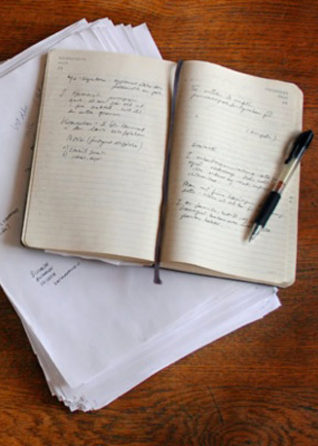Books
Want To Be A Writer?
The 22 Rules Of Storytelling
CYRIAQUE LAMAR
On Twitter, Pixar storyboard artist Emma Coats has compiled nuggets of narrative wisdom she's received working for the renowned award-winning animation studio over the years.
These rules are for storytelling, but many -- most, actually -- will help you in any kind of writing. [The skills for writing an article for sikhchic.com, for example, are not much different!]
Pause at each one, think about it, mull it around, see how you’ve used or abused the rule until now … before you move on to the next.
There’s a lot of gold in these hills!
#1: You admire a character for trying more than for their successes.
#2: You gotta keep in mind what's interesting to you as an audience, not what's fun to do as a writer. They can be very different.
#3: Trying for theme is important, but you won't see what the story is actually about till you're at the end of it. Now rewrite.
#4: Once upon a time there was ___. Every day, ___. One day ___. Because of that, ___. Because of that, ___. Until finally ___.
#5: Simplify. Focus. Combine characters. Hop over detours. You'll feel like you're losing valuable stuff but it sets you free.
#6: What is your character good at, comfortable with? Throw the polar opposite at them. Challenge them. How do they deal?
#7: Come up with your ending before you figure out your middle. Seriously. Endings are hard, get yours working up front.
#8: Finish your story, let go even if it's not perfect. In an ideal world you have both, but move on. Do better next time.
#9: When you're stuck, make a list of what WOULDN'T happen next. Lots of times the material to get you unstuck will show up.
#10: Pull apart the stories you like. What you like in them is a part of you; you've got to recognize it before you can use it.
#11: Putting it on paper lets you start fixing it. If it stays in your head, a perfect idea, you'll never share it with anyone.
#12: Discount the 1st thing that comes to mind. And the 2nd, 3rd, 4th, 5th – get the obvious out of the way. Surprise yourself.
#13: Give your characters opinions. Passive/malleable might seem likable to you as you write, but it's poison to the audience.
#14: Why must you tell THIS story? What's the belief burning within you that your story feeds off of? That's the heart of it.
#15: If you were your character, in this situation, how would you feel? Honesty lends credibility to unbelievable situations.
#16: What are the stakes? Give us reason to root for the character. What happens if they don't succeed? Stack the odds against.
#17: No work is ever wasted. If it's not working, let go and move on - it'll come back around to be useful later.
#18: You have to know yourself: the difference between doing your best & fussing. Story is testing, not refining.
#19: Coincidences to get characters into trouble are great; coincidences to get them out of it are cheating.
#20: Exercise: take the building blocks of a movie you dislike. How d'you rearrange them into what you DO like?
#21: You gotta identify with your situation/characters, can't just write ‘cool'. What would make YOU act that way?
#22: What's the essence of your story? Most economical telling of it? If you know that, you can build out from there.
[Courtesy: Stumble Upon. Edited for sikhchic.com]
February 21, 2015



